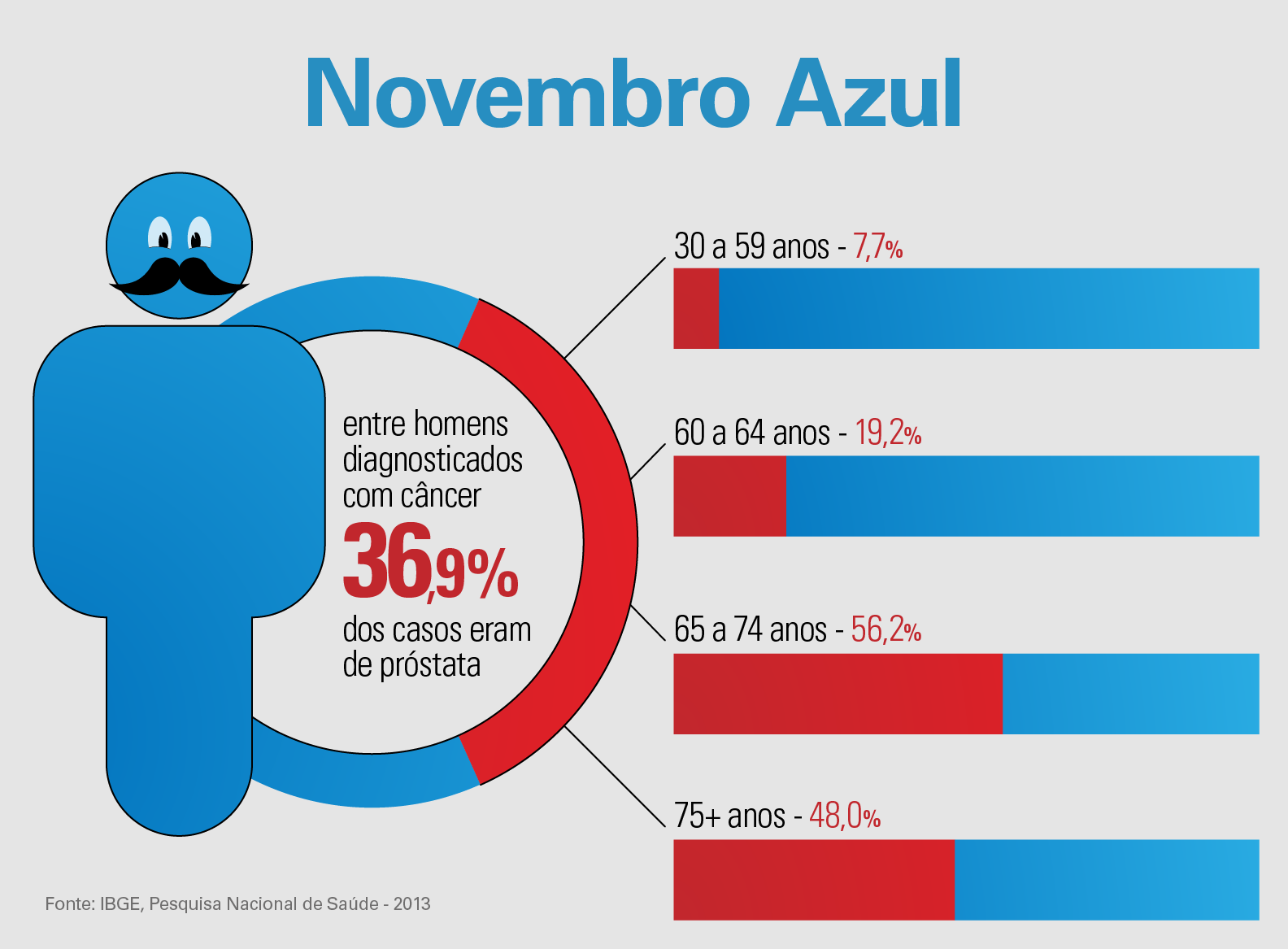Blue November promotes prevention of prostate cancer
November 28, 2017 09h00 AM | Last Updated: November 28, 2017 12h40 PM
Of all types of cancer, prostate cancer is the most frequent (36.9%) among men aged 18 years and over who discovered it in the first diagnosis, according to the National Survey of Health 2013 - PNS, released by the IBGE. Data from the Ministry of Health show that 14,484 men died from this disease in Brazil in 2015.
In order to change this reality, the Blue November campaign was created in Australia in 2003 and lately adopted in a number of countries. In Brazil, the campaign is supported by the National Institute of Cancer - Inca, which released the Prostate Cancer: let´s talk about this? booklet this year, aiming at improving the visibility of this disease in the National Day of Fight against Cancer (November 27).
In 2016, Inca estimated about 61,200 new cases of prostate cancer. Even having 3,240 more cases than that estimated for breast cancer (57,960) in the same period, the Blue November campaign is still not so visible as the Pink October one, which prevents breast cancer.
In order to prevent prostate cancer, the booklet recommends eating health food, not smoking and practicing physical activities. It also points out that the risk of developing prostate cancer increases in over weighted persons, persons with a history of cancer in the family and in elderly persons. Of the 408 thousand cases of the disease, 56.2% were among men aged between 65 and 74 years, according to the PNS 2013.

Only 25% of men aged over 50 years were submitted to a rectal examination.
The prostate cancer can be detected through two examinations: prostate-specific antigen - PSA and rectal examination. The first is a blood test that detects the level of this protein. Whenever high, this might indicate cancer or benign diseases of the prostate. The second examination is made by the physician, who assesses the size, form and texture of the prostate.
Prejudice and lack of information of a number of men in relation to the rectal examination jeopardize prevention and increase the mortality rates of this disease. As an example, the PNS 2013 showed that about 5.7 million men aged 50 years and over were submitted to a physical examination or rectal examination up to 12 months before the survey, which amounts to 25% of men in this age.
In case of any abnormality in the physical examination, the disease is only confirmed after a biopsy. The rectal examination is indispensable, since sometimes the blood test does not show the disease. According to Dr. Franz Campos, Inca´s head of urology, "there are cases in which the prostate-specific antigen does not express, even in patients bearer of prostate cancer", stresses him.
For the physician, it needs to bring more knowledge and information on the disease. "It is key that supporters of the Blue November and public entities that coordinate the rules of cancer diagnosis and treatment agree with each other, besides narrowing the contacts with the media, in order to highlight this major problem of public health in our country", states Dr. Franz Campos.
Text: Pedro Renaux and Karina Meirelles (trainee)
Photo and infograph: Pedro Vidal



















